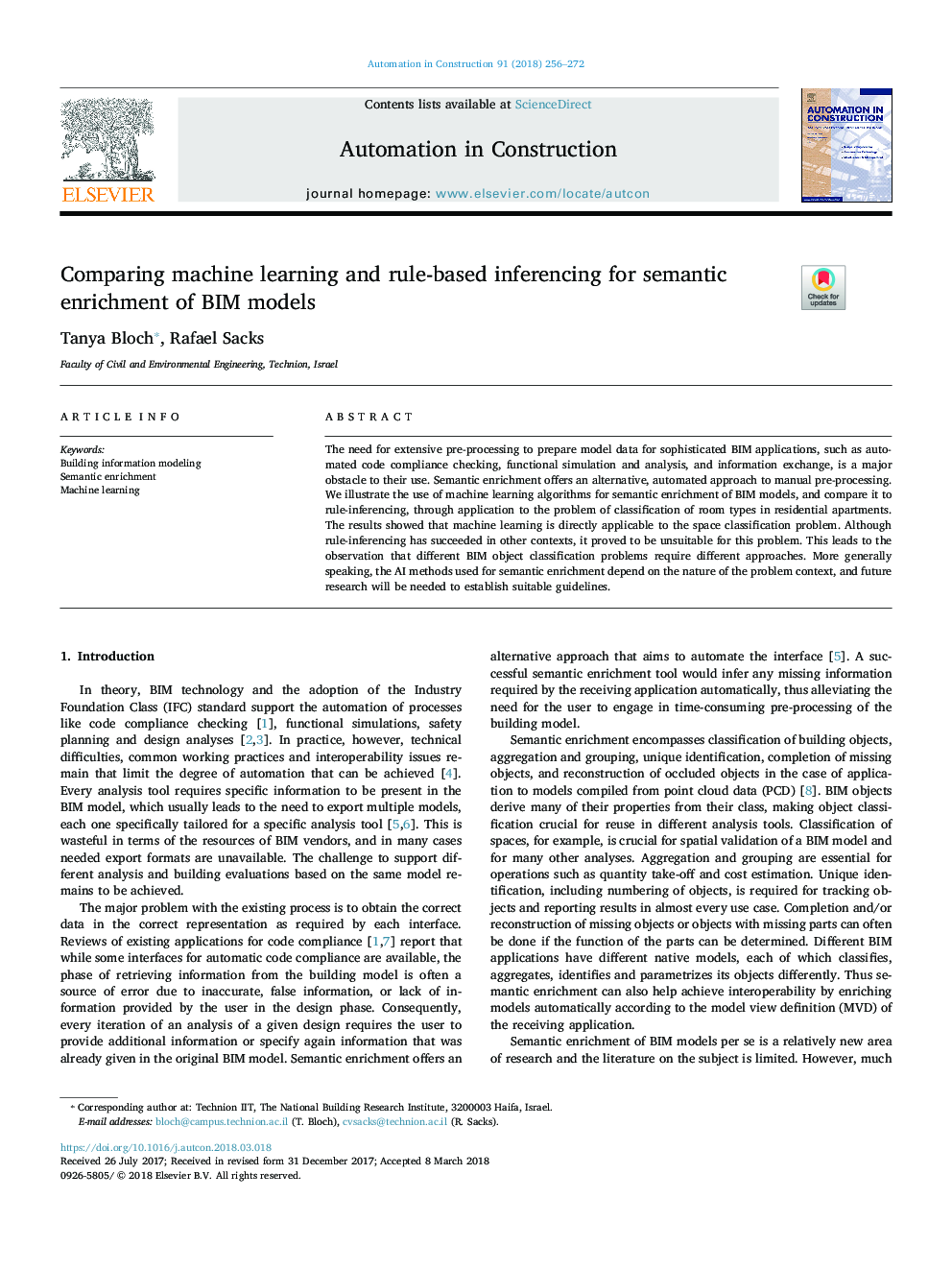| Article ID | Journal | Published Year | Pages | File Type |
|---|---|---|---|---|
| 6695623 | Automation in Construction | 2018 | 17 Pages |
Abstract
The need for extensive pre-processing to prepare model data for sophisticated BIM applications, such as automated code compliance checking, functional simulation and analysis, and information exchange, is a major obstacle to their use. Semantic enrichment offers an alternative, automated approach to manual pre-processing. We illustrate the use of machine learning algorithms for semantic enrichment of BIM models, and compare it to rule-inferencing, through application to the problem of classification of room types in residential apartments. The results showed that machine learning is directly applicable to the space classification problem. Although rule-inferencing has succeeded in other contexts, it proved to be unsuitable for this problem. This leads to the observation that different BIM object classification problems require different approaches. More generally speaking, the AI methods used for semantic enrichment depend on the nature of the problem context, and future research will be needed to establish suitable guidelines.
Related Topics
Physical Sciences and Engineering
Engineering
Civil and Structural Engineering
Authors
Tanya Bloch, Rafael Sacks,
